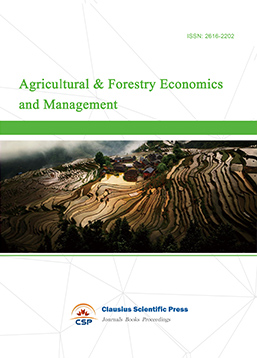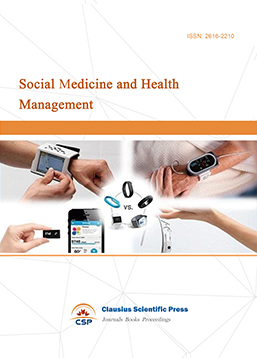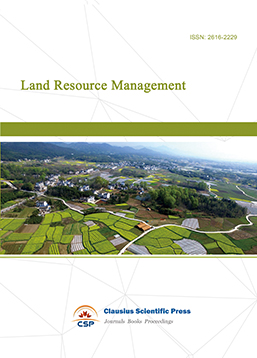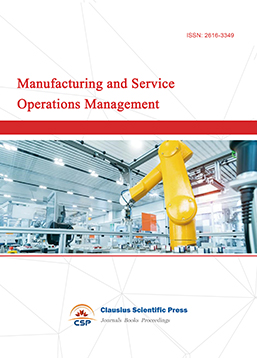Factors Influencing Innovation Performance of Assembled Building Construction Companies
DOI: 10.23977/ieim.2023.060304 | Downloads: 6 | Views: 1141
Author(s)
Hongyu Sun 1, Qiang Liu 1, Yafeng Li 1, Ming Liu 1
Affiliation(s)
1 School of Economics and Management, Liaoning University of Technology, Jinzhou, Liaoning, 121001, China
Corresponding Author
Yafeng LiABSTRACT
In order to improve the innovation performance of assembly building construction enterprises and promote the high-quality development of assembly building construction enterprises, this paper explores the influencing factors of the innovation performance of assembly building construction enterprises. Through theoretical analysis, it is found that the influencing factors of innovation performance of assembly building construction enterprises can be analyzed from four aspects, including internal innovation elements, cooperative innovation, construction market environment, and technological innovation policies. And based on the analyzed influencing factors correspondingly put forward relevant suggestions to provide some reference and guidance for assembly building construction enterprises to improve their innovation performance.
KEYWORDS
Assembled buildings, construction companies, innovation performance, influencing factorsCITE THIS PAPER
Hongyu Sun, Qiang Liu, Yafeng Li, Ming Liu, Factors Influencing Innovation Performance of Assembled Building Construction Companies. Industrial Engineering and Innovation Management (2023) Vol. 6: 21-27. DOI: http://dx.doi.org/10.23977/ieim.2023.060304.
REFERENCES
[1] Gao J., Wang J.F., Wei P. (2004) Enterprise technology innovation performance indicators: status, problems and new conceptual model. Scientific Research Management, 25, 14-22.
[2] Liu H., Zang N.L. (2011). The influence of technology innovation management behavior on innovation performance: the case of construction enterprises. Technology Economics and Management Research, 6, 44-47.
[3] Li Y.F., Song Y., Li C.W. (2019) Intellectual capital, knowledge management and corporate innovation performance: the case of building construction enterprises. Friends of Accounting, 21, 69-75.
[4] Lei X., Jin Y. (2010) A study on the relationship between R&D investment and firm performance based on firm life cycle: empirical data from listed firms. Science and Technology Management, 31(12), 11-17.
[5] Bi K.X., Lv J. (2010) Research on the evaluation index system of manufacturing enterprises’ process innovation ability under the condition of informationization. Science and Technology Progress and Countermeasures, 3, 124-127.
[6] Feng X. (2013) Research on the incentive mechanism to promote the implementation of technological innovation and intellectual property strategy of Chinese enterprises. Social Science Front, 2, 213-224.
[7] Li C., Liu Z.Y. (2013) An empirical study on the impact of coupling interaction between industry- university- research on innovation performance. Scientific Research Management, 3, 23-30.
[8] Rang C.C. (2006) Set relations in social research: evaluating their consistency and coverage. Political Analysis, 3, 291-310.
[9] Du Y.Z., Jia L.D. (2017) Histological perspective and qualitative comparative analysis (QCA): a new path for management research. Management World, 6,155-167.
[10] Tan H.B., Fan Z.T., Du Y.Z. (2019) Technology management capability, attention allocation and local government website construction: a group analysis based on TOE framework. Management World, 9, 81-94.
[11] Park Y., Mithas S. (2020) Organized complexity of digital business strategy: a configurational perspective. MIS Quarterly, 1, 85-127.
[12] Qu Y.W., Wang T.J, Cai Y.F. (2018) Influence of atmospheric particulate matter on ozone in Nanjing, China: observational study and mechanistic analysis. Advances in Atmospheric Sciences, 11, 1381-1395.
[13] Ku Y.Y., Ren W.H., Su F. (2021) Distribution characteristics of volatile organic compounds and ozone generation potential in different functional areas of Shenyang. Environmental Science, 11, 5201-5209.
[14] Zhang X.X., Yuan Z.B., Zheng J.Y. (2019) Establishment of a methodological system for assessing uncertainty of atmospheric pollutant monitoring data and its impact analysis on PMF source analysis. Journal of Environmental Science, 39, 95-104.
[15] Xu H., Zhang H., Xing Z.Y. (2015) Pollution characteristics and ozone generation potential of atmospheric VOCs in winter and spring in Xiamen. Environmental Science, 36, 11-17.
[16] Liu Y.F., Kong L.W., Liu X.G. (2021) Characteristics, secondary transformation, and health risk assessment of ambient volatile organic compounds (VOCs) in urban Beijing, China. Atmospheric Pollution research, 12, 33-46.
[17] Fan M.Y., Zhang Y.L., Lin Y.C. (2021) Source apportionments of atmospheric volatile organic compounds in Nanjing, China during high ozone pollution season. Chemosphere, 263,128-205.
[18] Wang Q. (2020) Pollution characteristics and sources of volatile organic compounds during compound pollution in Shanghai in May 2019. Environmental Science, 41, 2555-2564.
[19] Sun J. (2019) Urban VOC profiles, possible sources, and its role in ozone formation for a summer campaign over Xi'an, China. Environmental Science and Pollution research, 26, 27769-27782.
[20] Lin L.L., Cheng Y. (2021) Composition and source characteristics of VOCs on ozone pollution days in Shenzhen. China Environmental Science, 41, 3484-3492.
[21] Zhao L.N., Yao Z.M., Wu X.F., Ren C., Xu C. (2013) Characteristics of industrial solid waste generation and control measures in China. Environmental Engineering, 31, 464-469.
[22] Wei H.J., Yu H., Peng L.F., Li Z., Lu G.H. (2019) Analysis of the development status of comprehensive utilization of bulk industrial solid waste in China. China Resource Comprehensive Utilization, 37, 56-58.
[23] Wang C.G. (2020) Analysis of the current situation and development countermeasures of assembled buildings. Journal of Jin cheng Vocational and Technical College, 13, 24-26.
[24] Zhang Y., Zhang H., Wang Q.H., Zhang X.L. (2022) Research on schedule control of large complex projects based on BIM and PDCA theory. Journal of Building Science and Engineering, 39, 183-191.
| Downloads: | 27006 |
|---|---|
| Visits: | 812719 |
Sponsors, Associates, and Links
-
Information Systems and Economics

-
Accounting, Auditing and Finance

-
Tourism Management and Technology Economy

-
Journal of Computational and Financial Econometrics

-
Financial Engineering and Risk Management

-
Accounting and Corporate Management

-
Social Security and Administration Management

-
Population, Resources & Environmental Economics

-
Statistics & Quantitative Economics

-
Agricultural & Forestry Economics and Management

-
Social Medicine and Health Management

-
Land Resource Management

-
Information, Library and Archival Science

-
Journal of Human Resource Development

-
Manufacturing and Service Operations Management

-
Operational Research and Cybernetics


 Download as PDF
Download as PDF